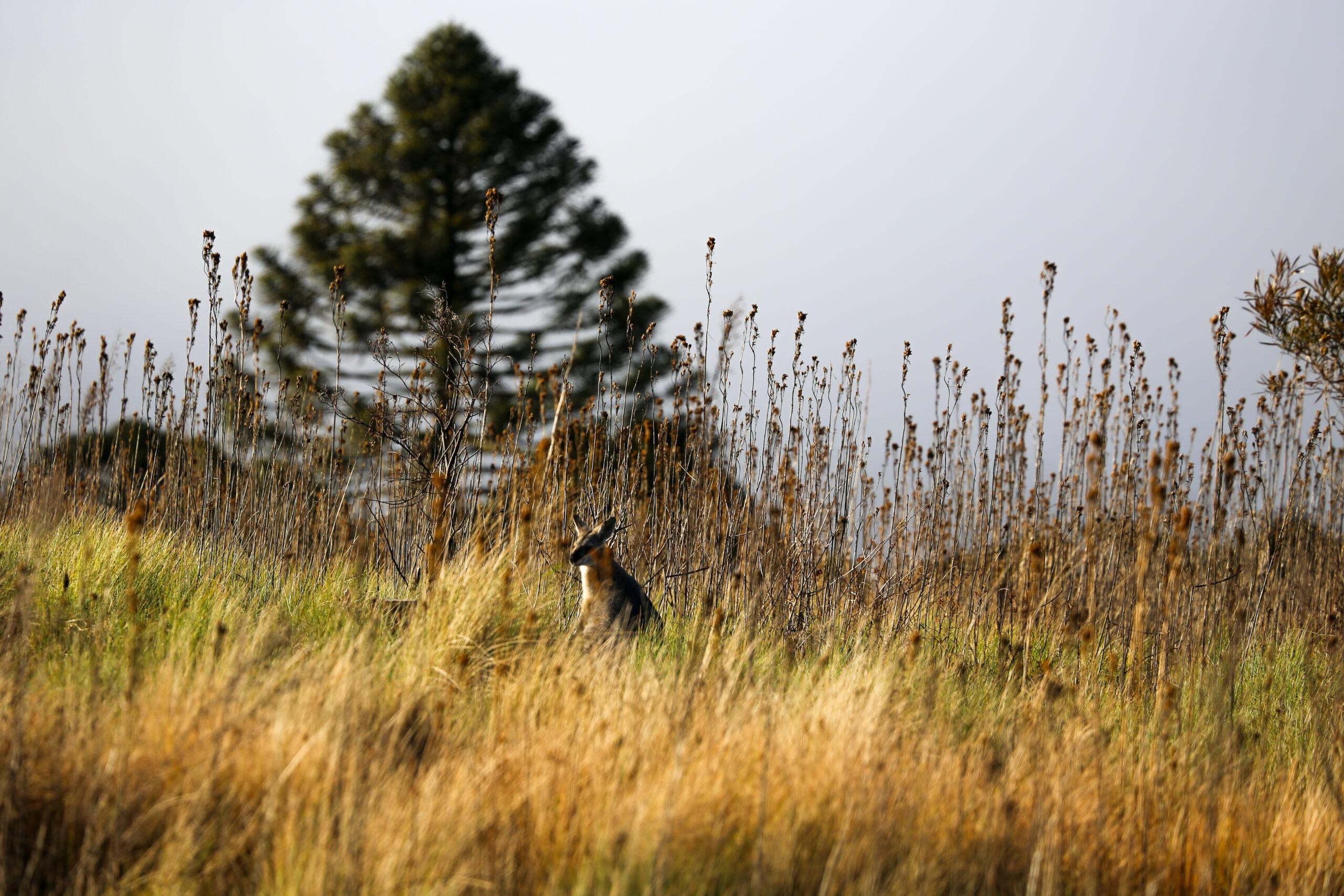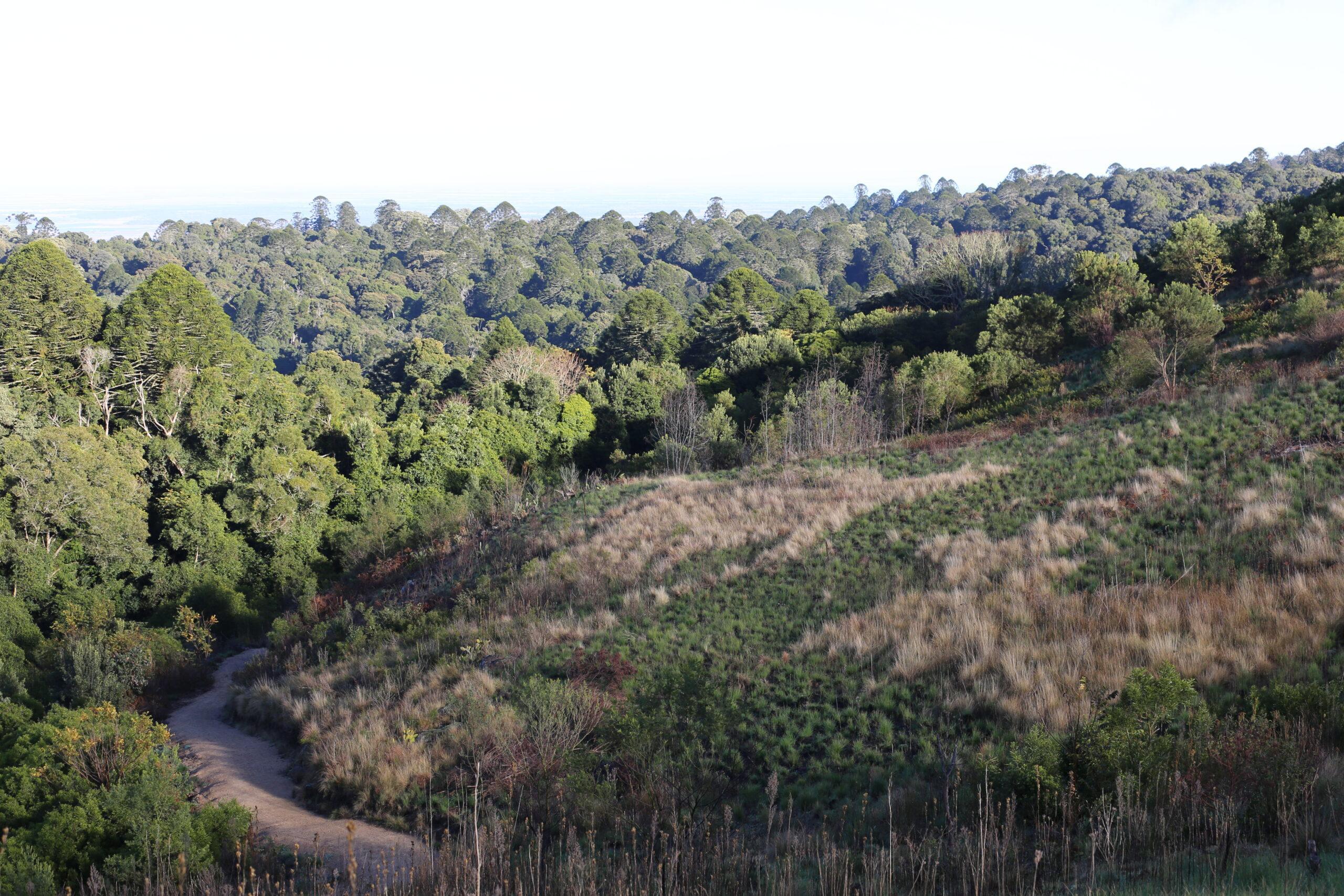Project start date: 01/09/2023
Project end date: 01/08/2026
NESP funding: $550,000 (GST-exclusive)
Inappropriate fire regimes threaten biodiversity and ecosystem function. They restrict natural processes like plant regeneration and reduce genetic diversity in plant communities. We’re investigating how collaborative partnerships with Indigenous fire practitioners can improve the management of forest and grassland ecosystems.

Recently burnt Bunya Mountains grassy bald, red-necked wallaby and bunya tree. Photo: Richard Unwin.
Our researchers are providing scientific support to the Bunya Peoples Aboriginal Corporation (BPAC) who conduct cultural burning in the ‘grassy bald’ mountain grasslands of the Bonye Biar (Bunya Mountains) in southern Queensland. Indigenous burning can help maintain biodiversity, ecosystem function and evolutionary potential, while enabling cultural, spiritual and provisional connections to Country for Indigenous people. In collaboration with BPAC, our research team is tracking these ecosystem responses to provide an evidence base for promoting cultural burning as a tool for land management.

Recently burnt grassy bald in the Bunya Mountains. Photo: Richard Unwin.
We are working alongside BPAC and other ranger groups in their ‘“Right fire” for Country and resilience through safety-based engagement’ project. We aim to develop monitoring techniques and analytical tools to better understand the ecological effects of cultural burning and communicate these broadly among BPAC and other ranger groups. We will also be identifying strategies to enhance collaborative partnerships between BPAC and other agencies in the future.
Key research areas
To address the challenge of appropriate fire management, this project is:
Project leader
The project is being led by Professor Jennifer Firn from QUT, Dr Angela Dean and Dr Annabel Smith from The University of Queensland. This project will contribute to the following cross-cutting initiative:
Contact
For further information, contact jennifer.firn@qut.edu.au, a.dean@uq.edu.au, annabel.smith@uq.edu.au or nesplandscapes@uwa.edu.au.
Research users
People